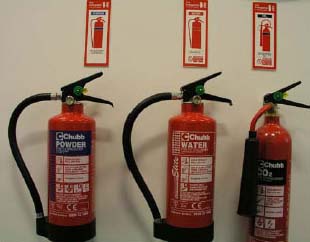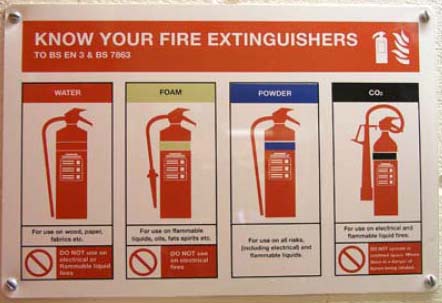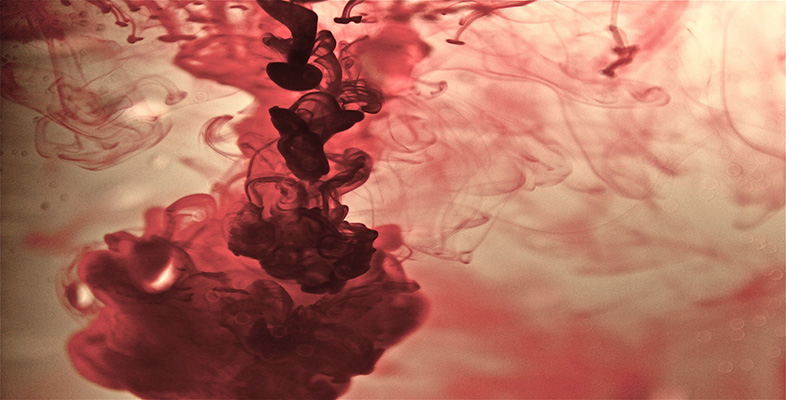7.4 Emergency procedures
7.4.1 What do you do if a chemical catches on fire?
It is important to know which fire extinguisher is appropriate for the chemical you are using. The four commonly used extinguishers are carbon dioxide, dry powder, foam, and water.

For example, water should not be used for a sodium fire; nor an electrical fire, because it conducts electricity.
Carbon dioxide is recommended for electrical fires and solvent fires, but not for sodium metal or lithium aluminium hydroxide.
Dry powder extinguishers are best for reactive metal fires.
The information on which extinguisher to use will be in the MSDS. It is recommended that you undertake some form of training before using any fire extinguishers because there are hazards associated with their use.

